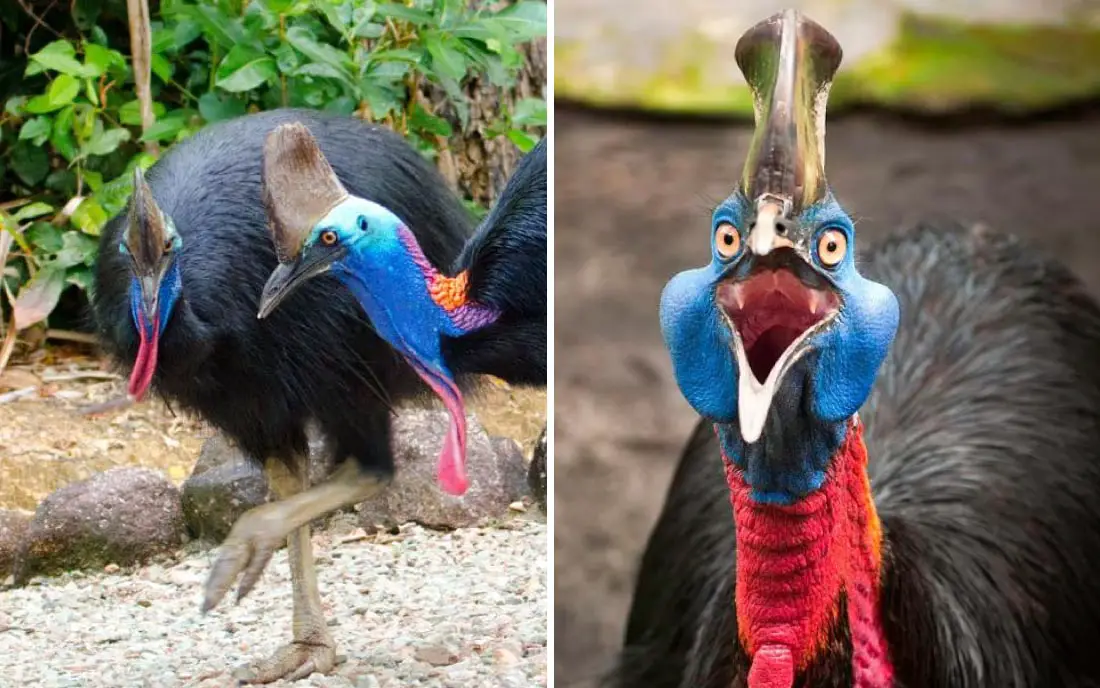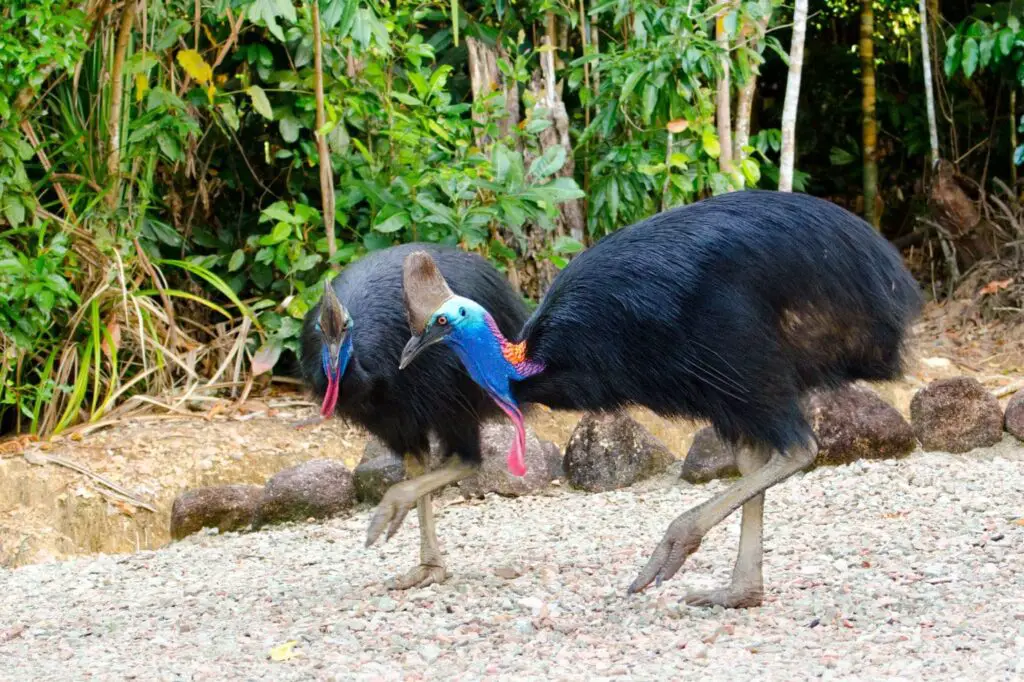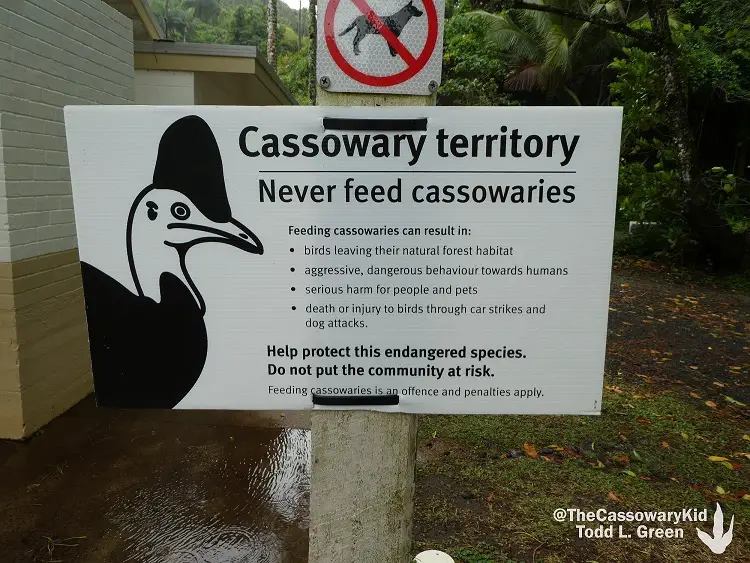Surviving the Cassowary: 10 Expert Tips to Avoid Encounters with the World’s Most Dangerous Bird

In the lush rainforests of Australia and Papua New Guinea lurks an avian menace, renowned for its striking appearance and formidable reputation: the Cassowary. This flightless giant, with its vibrant blue neck and menacing horn-like casque, commands respect and caution from all who venture into its territory.
Surviving an encounter with the Cassowary requires not only luck but also preparedness and knowledge. In this comprehensive guide, we offer 10 expert tips to help you navigate the habitats of this remarkable yet perilous bird.

Understanding the Cassowary
Before delving into survival strategies, it’s crucial to grasp the behavior and characteristics of the Cassowary. Standing up to 6 feet tall and weighing as much as 130 pounds, this flightless bird is armed with razor-sharp talons capable of inflicting serious injury.
Despite its somewhat comical appearance, the Cassowary is a skilled and agile predator, capable of reaching speeds of up to 30 miles per hour. Understanding its habits and territorial tendencies is the first step toward avoiding potentially dangerous encounters.
Tip 1: Respect its Territory
The Cassowary is fiercely territorial, particularly during breeding season. When exploring areas known to be inhabited by these birds, exercise caution and adhere to designated trails. Avoid straying into dense vegetation or areas where Cassowaries may be nesting, as they will vigorously defend their territory against perceived threats.
Tip 2: Keep a Safe Distance
Maintaining a safe distance from Cassowaries is paramount for personal safety. These birds are known to be highly protective of their young and may perceive humans as threats. If you encounter a Cassowary in the wild, give it ample space and avoid making sudden movements or loud noises that could provoke aggression.
Tip 3: Avoid Aggressive Behavior
In the presence of a Cassowary, it’s essential to remain calm and composed. Do not attempt to startle or provoke the bird, as this may trigger an aggressive response. Instead, maintain a calm demeanor and slowly back away from the Cassowary while avoiding direct eye contact.

Tip 4: Do Not Feed Wild Cassowaries
Feeding Cassowaries can disrupt their natural feeding patterns and lead to dependency on humans for food. Additionally, offering food to Cassowaries may encourage them to approach humans more closely, increasing the risk of dangerous encounters. It’s imperative to refrain from feeding these birds under any circumstances.
Tip 5: Be Mindful of Surroundings
When traversing Cassowary habitat, remain vigilant and attentive to your surroundings. Keep an eye out for signs of recent Cassowary activity, such as tracks, droppings, or vocalizations. By staying aware of your environment, you can better avoid unexpected encounters with these elusive birds.
Tip 6: Travel in Groups
When exploring Cassowary territory, it’s advisable to travel in groups rather than alone. Not only does this provide added safety in the event of an encounter, but it also reduces the likelihood of surprising a Cassowary with your presence. Strength in numbers can help deter potential confrontations.
Tip 7: Dress Appropriately
Wearing appropriate attire can further minimize the risk of injury in the event of a Cassowary encounter. Opt for sturdy, closed-toe shoes and long pants to protect against Cassowary attacks. Avoid wearing bright colors or flashy jewelry, as these may attract unwanted attention from curious birds.
Tip 8: Be Prepared to Retreat
In the event that a Cassowary displays aggressive behavior, it’s crucial to know when to retreat. Slowly and calmly back away from the bird while maintaining visual contact to assess its intentions. Do not turn your back on the Cassowary or attempt to outrun it, as this may trigger a pursuit response.
Tip 9: Carry Deterrents
For added peace of mind, consider carrying non-lethal deterrents such as a sturdy walking stick or pepper spray when venturing into Cassowary habitat. While these measures are rarely necessary, they can provide a sense of security in the unlikely event of a hostile encounter.
Tip 10: Seek Professional Guidance
For those unfamiliar with navigating Cassowary territory, seeking guidance from local experts or experienced guides can be invaluable. These individuals possess intimate knowledge of Cassowary behavior and habitat, enabling them to offer valuable insights and advice for safe exploration.

Expert Insights
Wildlife experts and researchers offer valuable insights into Cassowary behavior and strategies for minimizing conflict in their presence.
According to Dr. Jane Smith, a renowned ornithologist, “Understanding the natural history of Cassowaries is essential for promoting coexistence and reducing the risk of negative interactions. By respecting their space and avoiding confrontational behavior, humans can peacefully coexist with these magnificent birds.”

via: Dr. Todd L. Green/ twitter
Encountering a Cassowary in the wild can be a thrilling yet potentially dangerous experience. By respecting their territory, maintaining a safe distance, and adhering to expert survival tips, you can minimize the risk of harm and safely enjoy the wonders of Cassowary habitat.
Why is the cassowary considered the world’s most dangerous bird?
Because of its aggressive temperament and muscular legs with sharp claws, the cassowary is regarded the world’s most dangerous bird, and it will attack humans and other animals if it feels threatened.

What should you do if you encounter a cassowary?
If you encounter a cassowary in the wild, stay calm and avoid approaching the bird. The bird may attack if it feels threatened. Slowly back away and attempt to put some distance between yourself and the bird. Running or turning your back on the bird may result in an attack.
What is the cassowary’s diet?
The cassowary’s food is primarily composed of fruits and insects, but it will occasionally consume small mammals and reptiles.
Are cassowaries endangered?
Yes, Because of habitat loss and hunting, the cassowary is classified as a vulnerable species. There are just 1,500 to 2,500 cassowaries surviving in the wild, according to estimates.

Can cassowaries be kept as pets?
No, it is illegal in many countries to keep cassowaries as pets. Domestication is impossible due to the bird’s hostile behavior and specific diet.
The Shocking Story of an Elephant’s Revenge! After a tragic incident where an elephant killed a woman, the story takes an unexpected and jaw-dropping turn. Not only did the elephant attend her funeral, but it also caused chaos by smashing her corpse.
